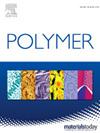A novel strategy inspired by Luban lock towards endowing polyzwitterionic electrolyte hydrogel with UCST behaviors
IF 4.1
2区 化学
Q2 POLYMER SCIENCE
引用次数: 0
Abstract
The electrostatic interaction in polyzwitterionic electrolyte hydrogels is the prerequisite for materials to exhibit temperature-sensitive behaviors. Few reports mention the potential temperature-sensitive properties of these hydrogels, although amounts of polyzwitterionic electrolyte hydrogels with bright prospects in advanced fields have been reported. PMAD (copolymer of AM, AA and DMC) is a typical polyzwitterionic electrolyte, which is taken as an example to elucidate the essential conditions for the UCST behaviors of polyzwitterionic electrolyte hydrogels. The temperature-sensitive properties of PMAD hydrogels depends on the tight stacking of zwitterionic polymer chains, while the introduction of chemical crosslinker could limit the movement of PMAD chains and increase the difficulty of forming effective electrostatic interactions between zwitterionic segments resulting in the disappearance of UCST behaviors. Accordingly, the strategy inspired by the Chinese Luban lock for compressing the distance of PMAD chains by utilizing the “mortise-tenon” structure could recovery the UCST behaviors of PMAD and are expected to endow more polyzwitterionic electrolyte hydrogels with temperature-responsive properties.

受鲁班锁的启发,一种赋予聚阴离子电解质水凝胶 UCST 行为的新策略
本文章由计算机程序翻译,如有差异,请以英文原文为准。
求助全文
约1分钟内获得全文
求助全文
来源期刊

Polymer
化学-高分子科学
CiteScore
7.90
自引率
8.70%
发文量
959
审稿时长
32 days
期刊介绍:
Polymer is an interdisciplinary journal dedicated to publishing innovative and significant advances in Polymer Physics, Chemistry and Technology. We welcome submissions on polymer hybrids, nanocomposites, characterisation and self-assembly. Polymer also publishes work on the technological application of polymers in energy and optoelectronics.
The main scope is covered but not limited to the following core areas:
Polymer Materials
Nanocomposites and hybrid nanomaterials
Polymer blends, films, fibres, networks and porous materials
Physical Characterization
Characterisation, modelling and simulation* of molecular and materials properties in bulk, solution, and thin films
Polymer Engineering
Advanced multiscale processing methods
Polymer Synthesis, Modification and Self-assembly
Including designer polymer architectures, mechanisms and kinetics, and supramolecular polymerization
Technological Applications
Polymers for energy generation and storage
Polymer membranes for separation technology
Polymers for opto- and microelectronics.
 求助内容:
求助内容: 应助结果提醒方式:
应助结果提醒方式:


